On September 30, 2012, Sunny Kuo (middle) traveled to Cuernavaca to meet his friend Mr. Tooru Ebisawa (right), and a local archaeologist, Ms. Guadaloupe (left). They discussed about the search for the link between ancient Sino-Olmec relationships. Following Ms. Guadaloupe’s guidance, they embarked on a ten day investigation into the core of the Olmec civilization, including: San Lorenzo, La Venta, Xalapa, Coatzacoalcos and Tres Zapotes.



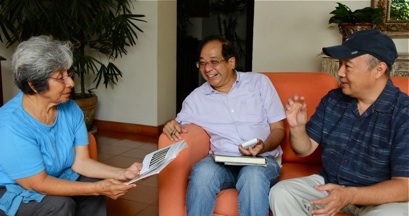
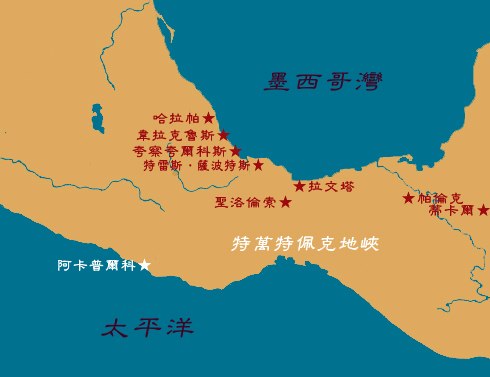


Jade garment knitted with gold thread, belonging to King Liu Sheng of the West Han Dynasty in the Zhong Shan region
Doll Figurines
Referring to San Lorenzo, here the human beings represented realistically also in clay, are uniformly of “Chinese” or Asian” race, in the most classical sense of the word. They have slanted thin eyes, thick eyelids, short nose, small mouth, fine chin always beardless, most of them with shaved heads and many of them with tufts carefully cut and shaved in similar styles; there is the notorious predominance of short age children representations, and in here the asexual “baby face” figures are very frequent.
That date corresponds -in the history of China- to the Han Dynasty, that lasted from the year 206 B.C., to 220 A.D., although the margin of error could be slightly wider.
When we checked the old Chinese texts, we found that the first historical narrations on the first sea travels of Chinese ships occur during this period, and an even more remarkable fact is that the cargo of the first recorded travel consisted, precisely, of children.
Qin Shi Huang, the first unifier of China, in order to search for herbs that produce the effect of eternal youth and immortality, commanded to construct a fleet of which 3,000 children embarked. The fleet set sail towards the east and never returned to China.
(Note 1)
These jade, wood, clay and stone sculpture figurines, carefully buried as funerary objects, served as a sacrificial substitute for genuine children. This was seen as a major social-change breakthrough in the Olmec civilization, which originated from the ancient Chinese Zhou Dynasty. Subsequently, emperor Qin Shi Huang’s tomb was also discovered to be accompanied by thousands of clay figurines.
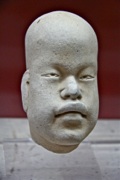
Elongated head figures of children was popular when the Olmec civilization was flourishing.
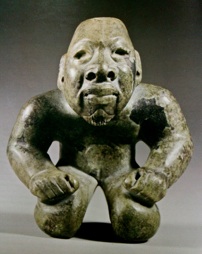
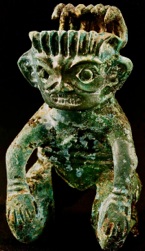

Jade figure with tattoos found in the tomb of Fu Hao at Yinxu Ruins
Currently, the kneeling figures unearthed from China's ancient civilization bears similarity with the kneeling figures from the Olmec ruins of La Venta in Mexico, hinting that similar practices may have existed across the Pacific.
Sanxingdui bronze kneeling figure
Olmec kneeling statues
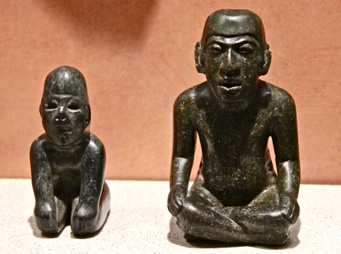
The Birthplace of Olmec Civilization
That this small isthmian region turned out to be the meeting place between the natives and the navigators from the Old World, who arrived there by accident, and their presence left marks and testimonies accessible for the contemporary investigation.
Those Ocean Currents are for the North Pacific Ocean, the current of Japan or Kuroshio, that goes to America and on its way back it is called Equatorial Current, and the Canarias Current that goes from Europe toward America, and on its way back is called Gulf Stream.
Note: Gonzalez Calderon: The Jade Lords

Then, if there was an arrival of people from the Old World, it necessarily had to be accidental and involuntary. The study of the Ocean currents in the Pacific Ocean and Atlantic Ocean shows that the probable place where the navigators had to arrive by accident, dragged by the Oceanic Currents, had to be the region of America in which such currents come and abruptly change direction, going back to their starting point, and that region is the American Isthmus (from Tehuantepec to Panama), and more exactly, the Isthmus of Tehuantepec, the only point where this phenomena could have occurred and at the same time it is the only place where multiple cultural human trains from the Old World have been found.
The cultural realizations of Mesoamerica Civilizations can not be explained only by the spontaneous and isolated evolution, and on the other hand the Andean civilizations of South American had modest cultural realizations, the same thing that happened to the pre-Columbian civilization toward the south of Mesoamerica, as the ones in Costa Rica and Colombia (San Augustin).
Note: Gonzalez Calderon: The Jade Lords

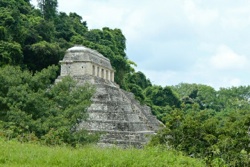
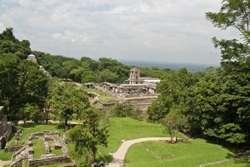
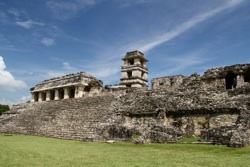
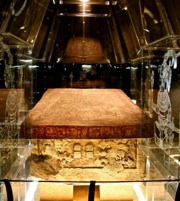
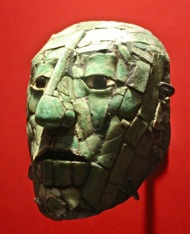
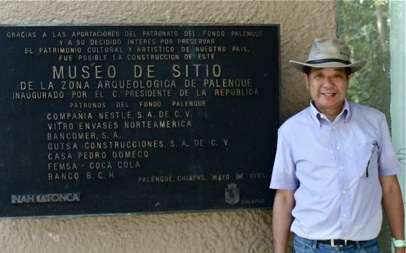
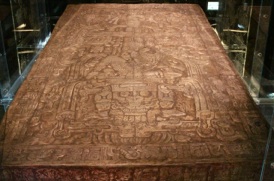
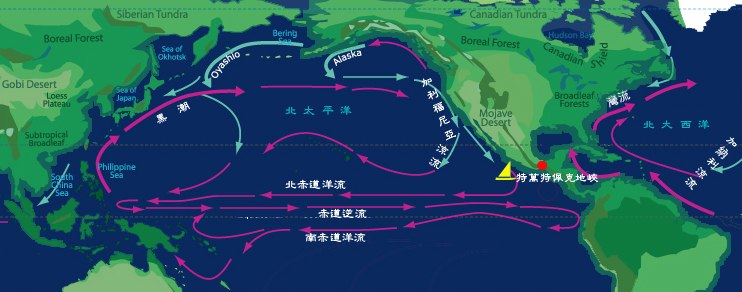
Ancient Chinese Figures



La Venta Ruins
http://en.wikipedia.org/wiki/La_Venta
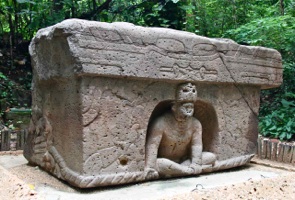


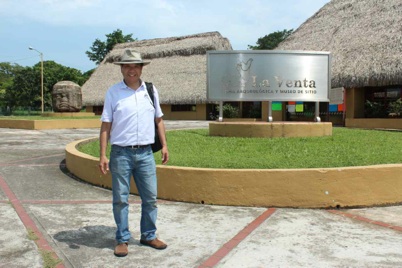

Mexico National Museum of Anthropology



Carlos Pellicer Regional Museum of Anthropology, Villahermosa
http://vivevillahermosa.com/vvh/museo-regional-de-antropologia-carlos-pellicer/





Olmec Archaeological Museum- Coatzacoalcos
http://portal.veracruz.gob.mx/portal/page?_pageid=313,4667516&_dad=portal&_schema=PORTAL
Xalapa Museum of Anthropology
http://www.xalapa.net/antropologia









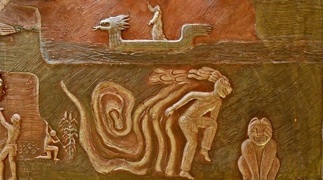





Elongated head customs
There were numerous ancient Indian tribes that adopted the widely popular elongated head custom. When newborn babies were between six to eight months, family members would take wood, metal, or cloth materials, tie it to their forehead and and begin flattening the head, such that the head becomes sharp and flat above the eyebrows. Apparently, artificial cranial deformation occurred for a very long time. Up until the fifteenth century AD, it was prevalent in many Indian tribes.
Note: Xu Song Shi, An Overview of when Chinese Discovered America
The Dongyi prehistoric people of China also popularized the custom of artificial cranial deformation. The so-called artificial deformation of the skull, commonly known as flat head, that is man-made occipital becomes flat. Taian Dawenkou cemetery, Qufu Xia Hou cemetery, Zhucheng Chengzi site, Jiaoxian Sanli ruins, Zouxian Yedian ruins and Jiangsu Dadunzi ruins all contained skull deformation remains. This is a special custom from the Dong Yi period.
Regarding the legend of Quetzalcoatl- the feathered serpent, a foreign conquerer who was tall, had a long, white beard, shoulder-length hair, wore a a white cloak and came from where the sun rises. He taught the locals how to make tools, etiquette, establish calendar, and farming, but for some reason he disappeared... The Olmec Archeological Museum walls in Coatzalcoalcos describe the history of the Olmec origin, and in particular depicted the scene where Quetzalcoatl rode a dragon boat.
La Venta Park Museum
http://www.sic.gob.mx/ficha.php?table=museo&table_id=127
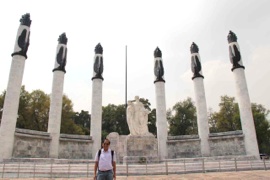
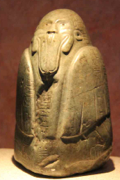

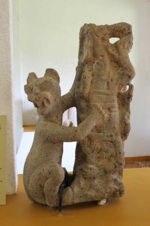
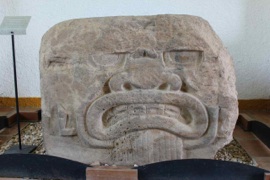

San Lorenzo Ruins Museum
http://www.delange.org/SanLorenzo/SanLorenzo.htm

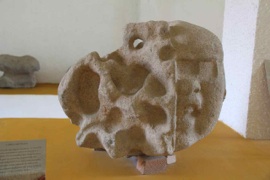
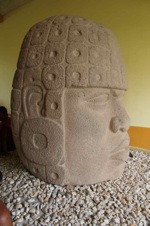
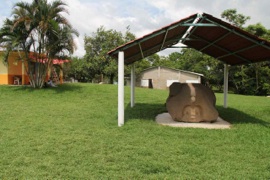


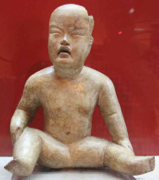
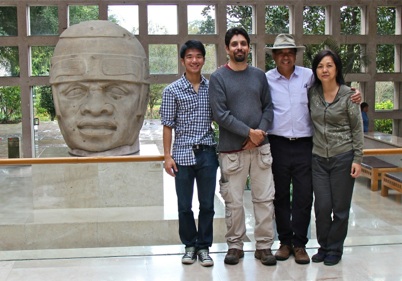
La Venta Park Museum is a site located in the city of Villahermosa, Mexico, that holds one of the largest collections of original pieces from the Olmec culture. This site was designed, organized and assembled by Tabasco poet Carlos Pellicer. Its inauguration was held on March 4, 1958 and is the only outdoor museum in Latin America.
The museum covers an area of 6.8 hectares with a collection of 36 archaeological monuments between altars, stelae, colossal heads and 33 monoliths dating from 1300-200 BC.
In the 1950’s Pemex discovered rich tapestry energy near the town of La Venta, and immediately began to explore, thus changing the natural environment and destroying many remnants built by that culture. For this reason, Carlos Pellicer Cámara took the initiative to rescue a large number of archaeological objects, moving them to the city of Villahermosa in a natural environment similar to when they were first discovered.
The Olmec Archeology Museum located in Coatzacoalcos an interesting example of the splendor of the Olmec civilization.
The Olmec Archaeology Museum, as its name implies, is dedicated to this pre-Columbian civilization, mother of Mesoamerican cultures that developed around 1500 BC mainly in the southern state of Veracruz and Tabasco. Of these, the main places of settlement that were best developed included: San Lorenzo and Tres Zapotes in Veracruz, and La Venta in Tabasco.
One of the characteristics of these ancient inhabitants of Veracruz is that they were great sculptors with clay, granite and jade stones, with the latter two being very difficult to work due to their toughness.
The sculptures reflected their deities and environment; but without a doubt, one of the recurring themes was a man and an anthropomorphic figure, usually a Jaguar, which was considered to be a sacred animal.
Considered one of the most important museums in the world, the National Anthropology and History Museum of Mexico City possesses the largest collection of pre-Columbian art, which is distributed amongst its 23 exhibition halls. Located within Chapultepec Park, the modern architecture, designed by Pedro Ramirez Vazquez, is characterized by its iconic umbrella roof supported by a single column, which represents a mythological tree and depicts eagles and jaguars—all important symbols to the pre-hispanic natives.
The Xalapa Museum of Anthropology is an anthropological museum in the city of Xalapa, in the state of Veracruz in eastern Mexico. It is the second largest museum in Mexico, after the National Museum of Anthropology in Mexico City. The building was designed by the architect Edward Durrell Stone and opened in 1986.
The museum is affiliated with the University of Veracruz and houses the largest collection of artifacts from Mexican Gulf Coast cultures such as the Olmec, the Huastec and the Totonac, with more than 25,000 pieces. The most notable pieces in the museum are the giant Olmec heads and the smaller Totonac carvings, which are called "caritas sonrientes" (little smiling faces) in Spanish. The museum also contains a 40,000 sq. meter garden.
San Lorenzo Tenochtitlan (San Lorenzo) is one of the three largest Olmec centers, located about 35 km SE of Acayucan, along the Gulf of Mexico, near the small town of Tenochtitlán.
San Lorenzo is at this moment, the oldest large Olmec ceremonial center in Tabasco and Veracruz. It reached its height of power between about 1200 BC - 900 BC and was the largest city in Mesoamerica at the time.
Another major characteristic of San Lorenzo is the large Olmec heads that weigh as much as 40 tons and stand up to 3 meters high. The stones used to create these heads were carried by sledges and rafts to the city from the volcanic Tuxtla Mountains, about 60 miles away. Most of them are currently housed in museums throughout Mexico.
In addition to the large Olmec heads, San Lorenzo was the site where most of the small clay artifacts that resembled “Chinese” or “Asian” facial features were found, according to Dr. Gonzalez, author of The Jade Lords.
Palenque is situated in the southeast coastal plain border in northern Chiapas and a classical Mayan civilization ruin. The city's history can be traced back to the 1st century BC, reaching its peak of urban development from 600 to 700 AD, in which most of the preserved buildings were mostly built during this period. Including the inner city, it covers an area of 1772 hectares. Palenque National Park has been recognized as a UNESCO World Cultural Site and is on the Natural Heritage List.
Palenque is most notable for the discovery of the King Pacal’s tomb in 1952, which was found in the temple of inscriptions. It provided to be of great significance for the in-depth study of Mayan civilization.
Palenque Ruins
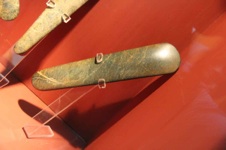
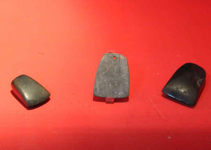
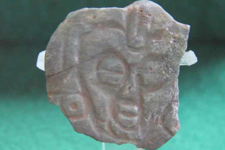
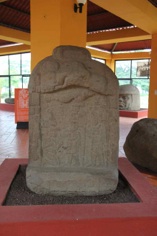
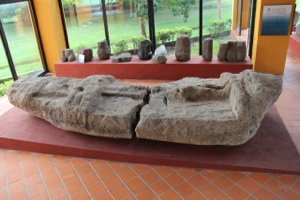
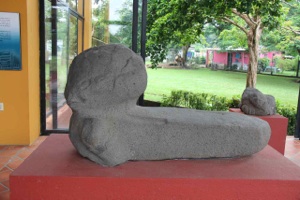
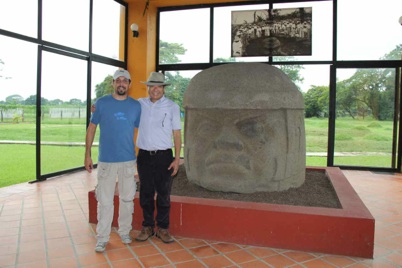

Tres Zapotes
http://archaeology.about.com/od/tterms/a/tres_zapotes.htm
http://anthropology.si.edu/olmec/english/sites/tresZapotes.htm
http://en.wikipedia.org/wiki/Tres_Zapotes
Tres Zapotes, is an important Olmec site, located in the Gulf Coast state of Veracruz in southern and central lowlands. It is considered to be the third most important Olmec sites after San Lorenzo and La Venta.


Kneeling Position
The Yinxu ruins discovered relics of kneeling sculptures, which in ancient Chinese is referred to as “zheng zuo”. This form of kneeling posture has been passed down until the end of the Han dynasty.
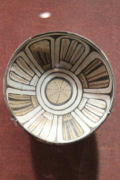
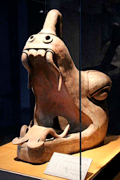
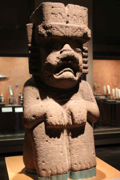
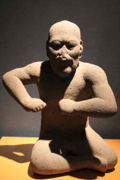
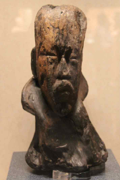
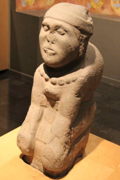
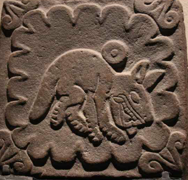
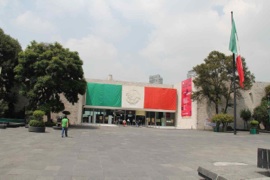
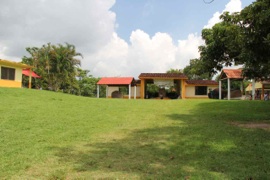

La Venta is a pre-Columbian archaeological site of the Olmec civilization located in the present-day Mexican state of Tabasco. The Olmec was one of the earliest civilizations to develop in the Americas. La Venta primarily served as a civic and ceremonial center. As a ceremonial center, La Venta contained an elaborate series of buried offerings and tombs, as well as monumental sculptures. These stone monuments, stelae, and "altars" were carefully distributed amongst the mounds and platforms. The mounds and platforms were built largely from local sands and clays.
Furthermore, in America’s First Civilization published in 1968, Michael Coe wrote that the Olmec civilization possibly came from Yin-Shang Chinese.
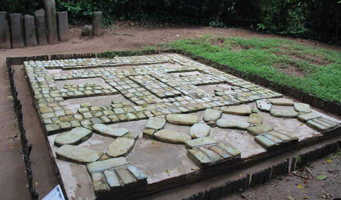
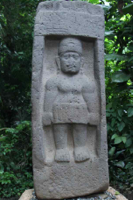
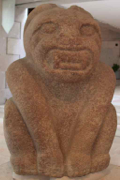

People once believed that Mesoamerican and Egyptian pyramids were not essentially the same because no tomb was ever found buried in the Mexican temples. But in 1952, Ruz Lhuillier made a startling discovery that proved otherwise. Underneath the temple of inscriptions was the body of the ruler and high priest, Pacal, who was buried in 683 AD. The magnificent funerary mask made of gems is naturally reminiscent to that of Zhongshan Jing Liu Sheng and his spouse’s jade garment. Sheng died in 113 AD and was buried in a mausoleum in Mancheng City of Hebei Province. On this note, we can observe two things that contain very similar traits but are in two completely different locations.
A jade mask belonging to King Pacal used in ritualistic/sacrificial purposes, which was unearthed at Palenque








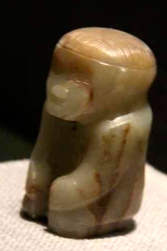
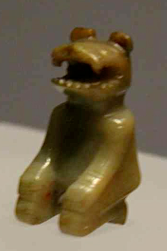
Tiger-shaped kneeling jade figure (Zhou)
Shang kneeling jade figure
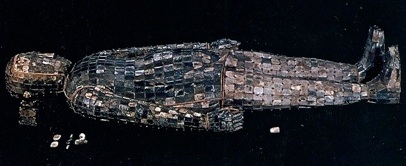
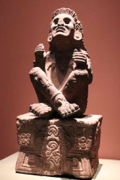
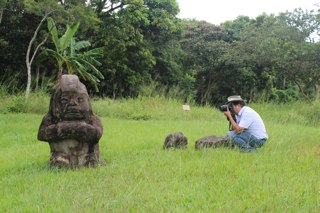
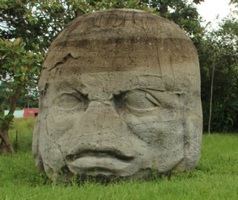
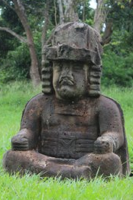
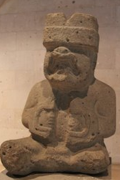

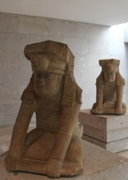
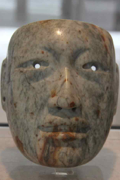
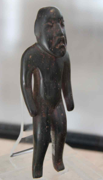



Olmec Figures
Its valuable collection of 770 archaeological objects constitutes one of the most complete legacies of the Mayas and the Olmecs, people that inhabited the current territory of the state of Tabasco. In addition, it keeps cultural vestiges found in the zones of Tlatilco and Teotihuacán.
Its halls exhibit works made of clay, stone, stucco, seashell and metal; artistic and utilitarian elements that demonstrate the development of the cultural and technological progress of the pre-Hispanic people. The grinning statue of a young Olmec male stands out amongst its historic and artistic treasures; it is an image that marks the beginning of the tour through the hall of Monumental Objects (ground floor), where superb sculptures are on exhibition.
The museum was inaugurated in 1952 and thanks to the motivation of renowned local poet Carlos Pellicer, the construction was finished in 1976.
Nowadays it is part of the Investigation Center of the Olmec and Mayan Cultures (CICOM).


